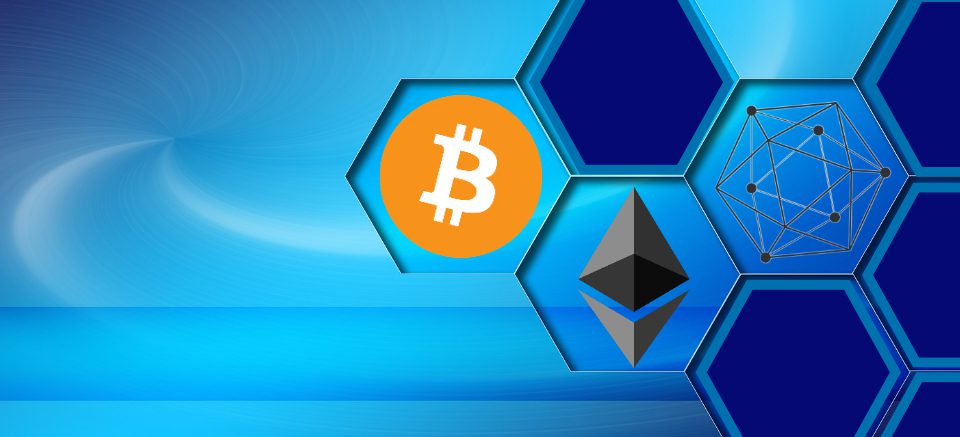- Contact us
- +599-9 461 4545
- info@dcsx.cw
A Debt-Based Crowdfunding Case Study

Debt-Based Crowdfunding Regulations
October 27, 2020
The Bond Market vs. Debt-Based Crowdfunding: Who Wins?
November 23, 2020A Debt-Based Crowdfunding Case Study

Publication 16. 2020
Debt-based crowdfunding is one of the alternative ways of financing for SMEs and start-ups to access capital, which they would otherwise maybe not have received from traditional financing platforms like banks. Over the years, this financial model has provided millions of dollars in loans, which has helped many businesses get off the ground.
However, it’s still a new concept for most countries, and so, there are many challenges that debt crowdfunding platforms face.
This case study is aimed at looking into Kiva, one of the more successful platforms in this industry. We shall seek to learn how they came by their success, the challenges they face(-ed), as well as their goals and achievements with debt-based crowdfunding.
Important Note: The mentioning of Kiva in this publication is by no means a favorite choice or promotion by the DCSX but rather and only used for educational purposes.
About the Platform
As earlier mentioned, Kiva is a very successful micro debt-based crowdfunding platform. It has roots in nearly all continents and has a widespread reach to even more countries. It’s, therefore, a platform that offers a lot of insights into this business.
Kiva is a non-profit organization that was founded in 2005 by Matt Flannery. Its headquarters is based in San Francisco. Today Kiva has offices in many cities around the world. Kiva gives entrepreneurs and start-up owners in underserved communities access to lenders worldwide, who can fund their projects and bring their ideas to life.
Their vision is to facilitate a financially inclusive world that gives all people the opportunity to improve their lives. They say that most of their borrowers are hardworking people, working two jobs to make both ends meet. This can be students, farmers, shopkeepers, builders, artisans, etc.
Currently, they boast of having a presence in 77 countries with more than 3.6 million borrowers and over 1.9 million lenders. According to their information published on their website, Kiva has also funded an impressive $1.45 billion in loans to borrowers worldwide, and an estimated loan repayment rate is 96.1%.
These statistics show that Kiva has, in every right, succeeded as a debt-based crowdfunding platform. Moreover, Kiva has received recognition from some of the finest publications in the world, from the wall street journal to The New York Times, to Inc. to the guardian, to the Huffington Post.
But how did they do it?
How does debt-based crowdfunding work on the platform?
Right from their homepage, Kiva makes it clear for borrowers that they’re getting a loan and not a handout. The application process for a loan on Kiva is relatively simple.
As a borrower, there are two ways you can apply for a loan; through a field partner or directly.
Partner model
Through this model, a borrower applies for the loan through the field partner. Partner loans are available for members in almost 80 countries in the world and are administered via the field partner. The borrower may, however, have to pay a little interest or fee to the field partner for their troubles, trying to push the loans to the rural areas.
Direct model
For direct loans, the application is much more straightforward. The borrower fills in the application through Kiva’s official website and waits for the loan approval. In this model, field partners aren’t involved, and so, there are zero extra expenses involved. The interest rates and/or fees on these loans are 0%.
Once the loan is approved and attained, the funds are sent directly to the borrower’s account. However, this model is only available to borrowers in the US and select social enterprises globally.
Once the application process is complete for both models, borrowers have slightly more than two weeks (15 days) to prove their creditworthiness. They can do this by having their friends and family lend them a certain initial/ minimum amount.
Then comes the main challenge, fundraising for the loan. Here, the loan is visible to all Kiva’s lenders for 30 days. Once the loan is done, borrowers generally have up to 3 years to repay their loans.
Application for Lenders
For lenders, the application is a simple four-step process. First, the lender chooses a borrower by browsing through the categories and selecting a business they’d like to support. Next, they have to make the payment of how much they want to loan, this can be as low as $25.
The payment can be made only through PayPal as Kiva doesn’t accept any other payment method.
After this, the borrower will then repay that loan over a specified period of time. The repayments are also made via PayPal. Lastly, Kiva encourages lenders to support another business by repeating the same process. As it stands, they have a 97% repayment rate, and so, lenders can choose to loan out the same $25 loan every time.
However, Kiva of course doesn’t guarantee that all loans will be repaid, which is a risk all lenders need to know before lending their money. This risk is further magnified in the case of the earlier mentioned direct loans, as there are no field partners to follow up on the repayment.
Due diligence on the loans
Debt-based crowdfunding (and especially micro debt-based crowdfunding) bears with it a significant risk of capital loss. And Kiva advises all their lenders to understand the risks associated with lending. They also take the due diligence process very seriously.
Since the loans can be administered directly or through the field partners, they conduct due diligence in two ways.
Due diligence for field partners
Field partners in Kiva are mostly microfinance institutions, schools, non-profit organizations, and social businesses. Before these organizations are allowed to post loans and monitor active members, they undergo due diligence and monitoring to assess their risk ratings.
The due diligence process for a potential field partner involves the following:
- First, Kiva reviews their application, which should include details about the organization, from their history and mission to financial statements, portfolios, strategic plans, etc.
- Next, Kiva conducts on-site due diligence, where an analyst interviews the organization’s management team, loan officers, and borrowers. He also analyses their management information system, reports, and documentation.
- Nonetheless, in cases where the organization is in an inaccessible country, Kiva may opt for an alternative location for the meet-up, or it may use other external factors for the process.
- After the visit, Kiva prepares a detailed report of their findings, alongside their projected credit tier, then lastly, submit it for approval to the investment team.
Even after the field partner is approved, Kiva maintains a high level of monitoring for all partners, with the aim of ensuring that all loans get to the borrowers and lenders in totality.
Due diligence for direct loans
Clearly, and this is confirmed by Kiva, direct loans pose a higher risk for lenders than partner loans. Launched in 2011, the direct loan process is only accessible to borrowers in the US who are otherwise financially excluded. And although it is proven to be quite effective, it’s still miles from being perfect.
The Kiva staff conducts the due diligence for this model. They analyze a borrower’s loan application and determine if they have satisfied all the requirements. They do the necessary research to verify their identity and even screen the applicants through the office of Foreign Assets Control Terrorism database as a precaution.
Additionally, the direct loan applicant must be vetted by social underwriting, where a Kiva Trustee or member of their community interviews the borrower. This forms the basis for their creditworthiness.
Next, the applicant must recruit at least 5-30 members of their network (depending on loan amount) to support them during the fundraising period.
After the loan is raised, Kiva continues with ongoing monitoring and follows up via phone, email, and reminders, once the borrower is behind repayment. If a borrower fails to repay the loan or defaults the loan, then they become disqualified for future loans.
How does the platform cover its costs?
Being a non-profit organization, Kiva doesn’t earn any money from the loans on its platform. They send out everything to the field.
To cover their expenses, Kiva relies on the donations of its lenders. In fact, Kiva has set up a Kiva user Funds LLC that holds all the capital for the Kiva users. This account separates all funds from the donations received, which go to the Kiva Micro funds account.
They also get a small share of their earnings from grants, field partner’s service fees, and mostly, donations from foundations and supporters.
How did the platform become so successful?
Kiva has grown to become an international organization with roots in countries worldwide. But how did they get there? How did they manage to succeed where so many have failed?
To uncover this, we’ll first look at their goals and objectives:
Goals
Right from its inception, Kiva’s mission was to ‘remove the systematic barriers for underserved communities’ around the world. It strives to expand financial access to underserved communities, helping them bring their businesses to life.
Their end goal is to create a world with “more equal” opportunities. A world where everyone has some access to capital and resources to improve their lives.
And although Kiva has mostly focused on helping women entrepreneurs and refugees, it has continued to expand its commitments to other issues around the world. Some of their most recent goals involve supporting the black community in the US, and helping businesses affected by the COVID-19 pandemic.
Achievements
For a non-profit organization, Kiva has walked in waters most NGOs have never walked before. Some of its greatest achievements include:
- Lending $1.4 billion across 77 countries
Since its inception, Kiva has lent more than a billion dollars to borrowers internationally/worldwide. From their calculations, an estimated $2.5 million is crowdfunded for lenders each week. At the same time, a Kiva loan is funded every 2 minutes.
This means that through their platforms, thousands of people and families receive the capital they need for their businesses. Furthermore, even though they don’t have access to every country in the world, operating in nearly 80 countries is in itself, a considerable achievement.
- Impacting thousands of lives
True to their mission, Kiva has provided access to funds for more than a million lives. They report to have helped about 918,000 farmers, and another 218,000 people with access to some form of clean energy. They’ve also managed to help 66,000 people with education loans.
Kiva has transformed more than 280,000 borrowers living in conflict-stricken zones, and more than a million borrowers living in the less developed countries.
- Thousands of Jobs created
Kiva reports having 110 employees and 2,735 field partners and trustees spread across the world. This is a significant improvement, considering it started with only two employees back in 2005.
Moreover, Kiva works with numerous volunteers around the world, allowing learning and growing in their careers.
- Worldwide recognition
Kiva is a household name in the crowdfunding world. It has received accolades and worthy mentions from major magazines. Their commitment to efficiency and effectiveness was recognized when they received Google’s Global Impact Award and also winning the 2015’s Financial Inclusion Challenge from The Wall Street Journal.
- Partnerships with major companies
Kiva has, over the years, formed partnerships with an array of corporations and foundations that have helped them expand their reach around the world.
Some of the partners worth mentioning include Google, Hewlett Packard Enterprise foundation, HP Foundation, The Mastercard Foundation, PayPal, Capital Group, Mulago Foundation, Cisco Foundation.
Moreover, Kiva has also partnered with the International Rescue Committee (IRC) to teach business classes to Refugee women.
Struggles and failures
While Kiva has enjoyed a lot of success over the years, it still has many aspects of their process that need to be streamlined.
For one, Kiva doesn’t guarantee 100% repayment of the loans. This means that borrowers can borrow a loan and default on the payment. In other cases, the borrower may repay the loan, but the field partners fail to make the payment back to Kiva.
Another issue that’s raised questions over Kiva’s crowdfunding according to the Atlantic (2015) is its lending biases. Research performed by Nichola Raihani and Sarah Smith from London University College and Bristol University respectively indicates that lenders are biased on the platform. A similar observation was found by researchers from the Hong Kong University of Science and Technology, the National University of Singapore, and Nanyang Technological university.
In a nutshell, they uncovered that most lenders judge the borrowers based on their gender and physical attractiveness, not the quality of their business or repayment risk. In fact, the study indicated that lenders give more to women than men, and even more if the woman is attractive.
Furthermore, despite Kiva striving to fight against racial discrimination, the research showed that Black borrowers were less likely to be funded, compared to their white counterparts, even if they objectively had a higher creditworthiness.
This in itself brings out inequality in their system, and it’s one thing Kiva hasn’t been able to address.
Final thoughts
Kiva has changed the peer-to-peer landscape in the world. They have introduced a new way to leverage technology to transform the lives of the underprivileged and ‘unfundable’ members of our communities.
Understanding their journey, challenges, and success provides a roadmap for all potential P2P lending platforms. It shows them the problems that need to be overcome to streamline this crowdfunding model.
With more and more people embracing this concept, P2P lending will soon unlock the economic potential of undervalued communities around the world. All in all, if there’s anything that Kiva has shown us, it’s that the future of debt-based crowdfunding is very promising.
Sources
AS. October 30, 2015. Kiva: A crowdlending twist on traditional microfinance. https://digital.hbs.edu/platform-digit/submission/kiva-a-crowdlending-twist-on-traditional-microfinance/
Jenq, C., Pan, P., Theseira, W. July 2, 2015. Elsevier Journal. Beauty, weight, and skin color in charitable giving https://www.sciencedirect.com/science/article/pii/S0167268115001675
KIVA. Last retrieved July 2020. https://www.kiva.org/
Pinsker, J., August 3, 2015. The Atlantic. How to Succeed in Crowdfunding: Be Thin, White, and Attractive. https://www.theatlantic.com/business/archive/2015/08/crowdfunding-success-kickstarter-kiva-succeed/400232/
Thorpe, D., September 24, 2018. Forbes. Kiva Is Really A Crowdfunded Bank For Refugees And Other ‘Unbankables’. Forbes. https://www.forbes.com/sites/devinthorpe/2018/09/24/kiva-is-really-a-crowdfunded-bank-for-refugees-and-other-unbankables/#63514000220a
This publication is presented to you by the Dutch Caribbean Securities Exchange
Written by N. Martina. Edited by D. Intriago and R. Römer.
Download the PDF version of this article: EN




